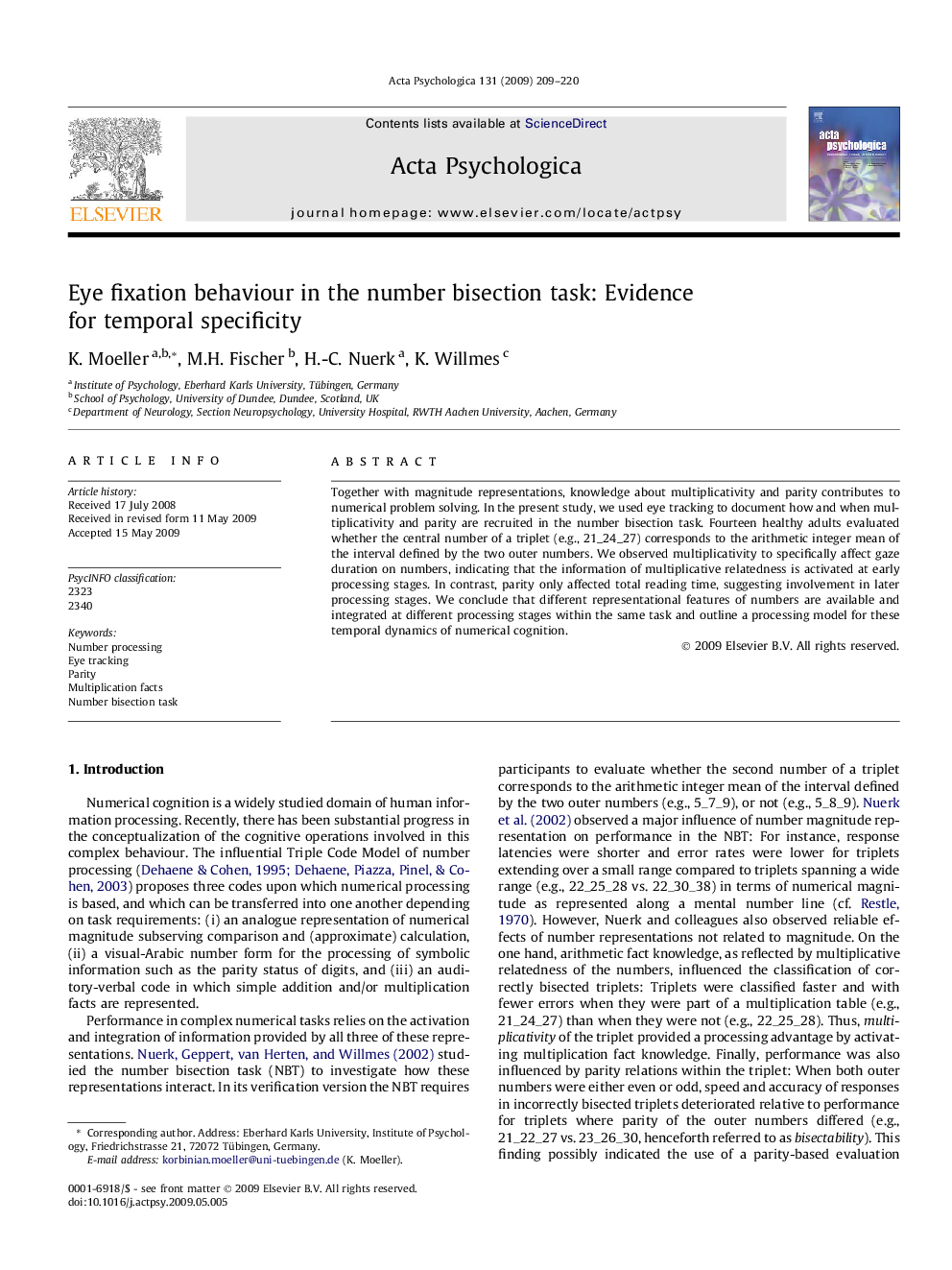| Article ID | Journal | Published Year | Pages | File Type |
|---|---|---|---|---|
| 920449 | Acta Psychologica | 2009 | 12 Pages |
Together with magnitude representations, knowledge about multiplicativity and parity contributes to numerical problem solving. In the present study, we used eye tracking to document how and when multiplicativity and parity are recruited in the number bisection task. Fourteen healthy adults evaluated whether the central number of a triplet (e.g., 21_24_27) corresponds to the arithmetic integer mean of the interval defined by the two outer numbers. We observed multiplicativity to specifically affect gaze duration on numbers, indicating that the information of multiplicative relatedness is activated at early processing stages. In contrast, parity only affected total reading time, suggesting involvement in later processing stages. We conclude that different representational features of numbers are available and integrated at different processing stages within the same task and outline a processing model for these temporal dynamics of numerical cognition.
